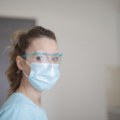BOHS – COVID-19: Occupation Risk Rating and Control Options According to Exposure Rank
At a time where there is increasing focus on controlling the spread of infection in public, the British Occupational Hygiene Society is issuing a risk analysis tool for professionals to focus on the most appropriate measures to help employers reduce the risk of catching COVID-19 at work.
The British Occupational Hygiene Society, the Chartered Society for Worker Health Protection and a leading scientific voice on the prevention of exposures to health hazards at work, has drawn together academics and industry experts to develop a tool to be used by occupational hygienists and others to look at all the means that can be used to protect key workers from COVID-19.
The approach was based on a concept proposed by BOHS Expert Group member Professor John Cherrie, Principal Scientist at Institute of Occupational Medicine, and one of the UK’s leading independent academic voices on the COVID-19 crisis. The methodology was further developed by Professor Raymond Agius (Emeritus Professor of Occupational and Environmental Medicine at The University of Manchester), drawing on research published by Professor Lisa Brosseau, Professor (retired), Research Consultant, University of Minnesota Center for Infectious Disease Research and Policy. John Dobbie, Group Industrial Hygiene Director of BP, was instrumental in turning the theoretical model into a practical tool, as was current BOHS President, Kelvin Williams, who said:
It’s a perfect example of how industry, academia, and scientific bodies have come together to make complex and fast-moving science practically usable to get Britain back to work. COVID-19 will be with us for a long time and there are long-term risks in just relying on PPE in the workplace. A preventative approach, as successfully used for other occupational exposures, built on good occupational hygiene practice, is what is needed. This is typical of the work the Society has been quietly doing for decades to protect workers from early deaths and long-lasting illness.
And he added:
This risk matrix is by no means intended as the last word on this subject. We are of course conscious of the rapid progress in the science relating to the virus, its transmission, and its infectivity, and we would welcome further scientific evidence to develop this. However, we were really conscious, particularly talking to people trying to protect key workers, that we needed to provide something to help those undertaking the difficult task of implementing COVID-19 control measures and looking at risk
Initially, the occupational groups were selected to represent “key workers”, however the examples have been expanded somewhat to include groups such as nail bar workers. We can’t cover every occupation, but hope that the range of occupational groups selected will enable a reader to find a description analogous to their situation. Given the variety and complexity of workplaces, the matrix provides a baseline set of measures, risk evaluation, and occupational types to help decision-makers make balanced decisions and decide what are the reasonable precautions.
Kevin Bampton, CEO of BOHS, sees this as an essential step in setting the country up for fighting the virus over the next stage of the pandemic.
There has been a justifiable focus on the part the general public has to play in protecting each other from infection, for example, by staying indoors and wearing face-coverings. However, if we are to be braced to face our first Autumn and Winter with COVID-19, we need to have implemented appropriate, affordable and effective measures to protect us from catching the disease at work. Workplace infections will harm our health, endanger our loved ones and undermine the much-needed recovery, but employers need help. BOHS works tirelessly to promote occupational hygiene and the appliance of scientific principle to practical workplace challenges exactly for this reason. We believe that this risk matrix can help experts make the judgements not only needed to save lives, but also to save jobs.



